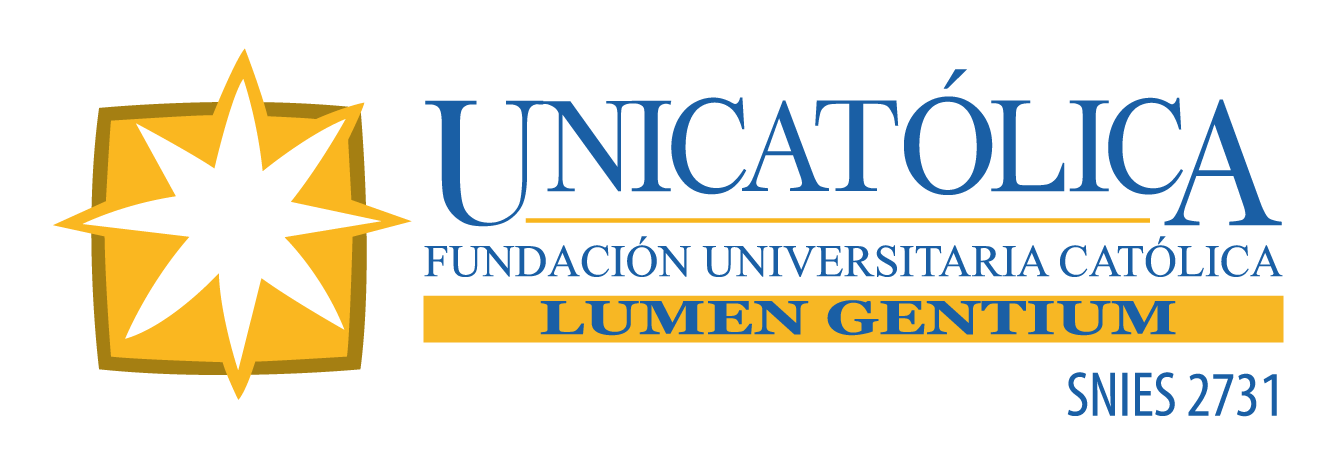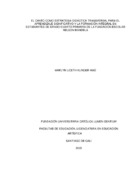Mostrar el registro sencillo del ítem
El canto como estrategia didáctica transversal para el aprendizaje significativo y la formación integral en estudiantes de grado cuarto primaria de la Fundación escolar Nelson Mandela
| dc.contributor.advisor | García Ospina, Edwin | |
| dc.creator | Klinger Amú, Marlyn Liceth | |
| dc.date.accessioned | 2023-11-03T20:33:26Z | |
| dc.date.available | 2023-11-03T20:33:26Z | |
| dc.date.created | 2022 | |
| dc.identifier.uri | http://hdl.handle.net/20.500.12237/2523 | |
| dc.description | Los educandos no están aprendiendo significativamente las lecciones enseñadas en el aula y debido a esto es evidente el bajo rendimiento académico el cual es considerado como un problema que se da frecuentemente en las Instituciones Educativas y tiene diversas causas que se relacionan con el contexto familiar, social y escolar del estudiante. Algunas de estas causas están relacionadas con la falta de acompañamiento de los padres, el desinterés y desmotivación por aprender y las estrategias de enseñanzas implementadas por los educadores que en muchas ocasiones no son entendidas por los educandos. Con el fin de contrarrestar problemáticas sobre la falta de aprender significativamente que conlleva al bajo rendimiento académico de los educandos, se pone en práctica una estrategia didáctica transversal que permite enseñar a los educandos a través del canto los sistemas del cuerpo humano para ir mejorando poco a poco su promedio escolar y fortalecer su formación integral. El canto permite que las personas puedan comunicarse consigo mismo y con los demás, que puedan expresar sus sentimientos, pensamientos, ideas y emociones. Al crear las canciones, estas funcionan como un medio efectivo para revivir experiencias, reconstruir recuerdos que en algún momento de la vida te hicieron sentir inseguro, lastimado o feliz y lo más importante, es que los docentes pueden emplearlas en sus clases como estrategias didácticas transversales que le permite al educando mejorar su bajo rendimiento académico logrando así, aprender significativamente. | spa |
| dc.description.abstract | The students are not learning significantly the lessons taught in the classroom and due to this the low academic performance is evident, which is considered a problem that occurs frequently in Educational Institutions and has various causes that are related to the family, social context and school of the student. Some of these causes are related to the lack of parental support, lack of interest and lack of motivation to learn, and the teaching strategies implemented by educators that are often not understood by students. In order to counteract problems about the lack of learning significantly that leads to low academic performance of students, a transversal didactic strategy is put into practice that allows students to teach through singing the systems of the human body to improve little by little. little their school average and strengthen their comprehensive training. Singing allows people to communicate with themselves and with others, to express their feelings, thoughts, ideas and emotions. By creating the songs, they work as an effective means to relive experiences, rebuild memories that at some point in life made you feel insecure, hurt or happy, and most importantly, teachers can use them in their classes as transversal teaching strategies. that allows the student to improve their low academic performance, thus achieving significant learning. | spa |
| dc.format.mimetype | application/pdf | spa |
| dc.subject | Aprendizaje significativo | spa |
| dc.subject | Formación integral | spa |
| dc.subject | Secuencias didácticas | spa |
| dc.title | El canto como estrategia didáctica transversal para el aprendizaje significativo y la formación integral en estudiantes de grado cuarto primaria de la Fundación escolar Nelson Mandela | spa |
| dc.subject.subjectenglish | Significant learning | spa |
| dc.subject.subjectenglish | Integral formation | spa |
| dc.subject.subjectenglish | Didactic sequences | spa |
| dc.rights.accessRights | info:eu-repo/semantics/openAccess | spa |
| dc.creator.degree | Licenciada en Educación Artística | spa |

